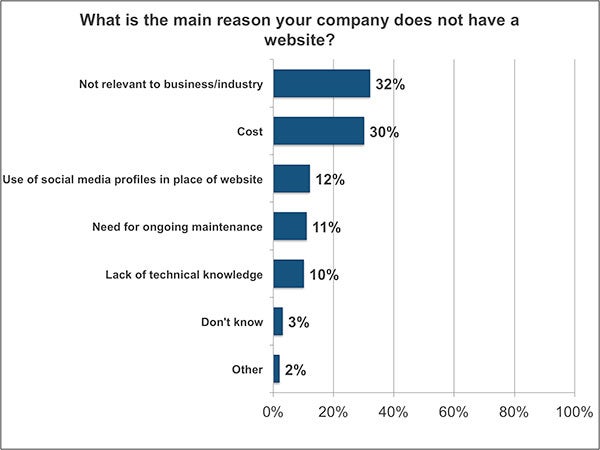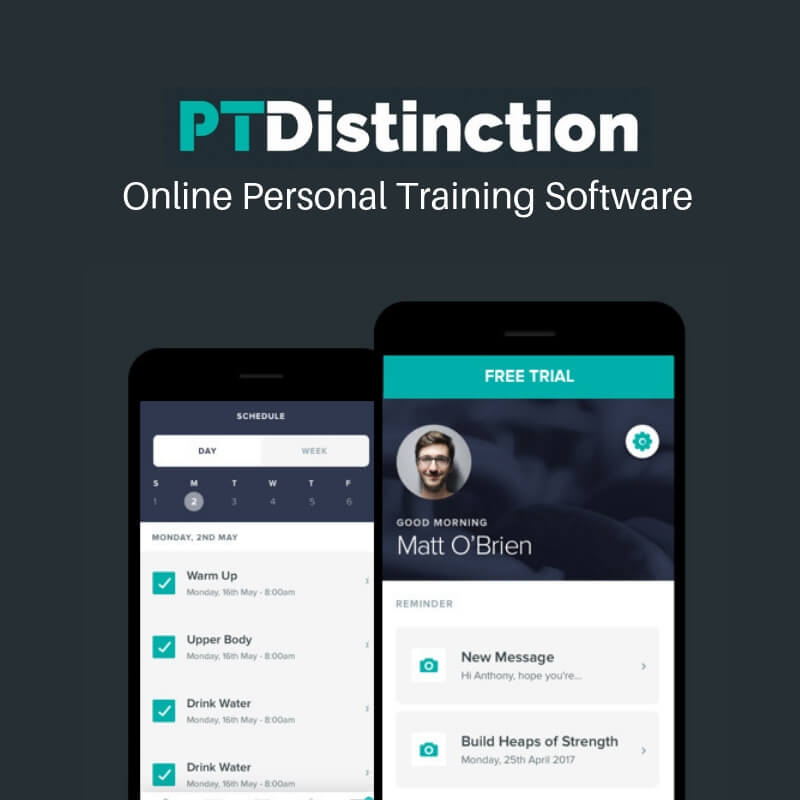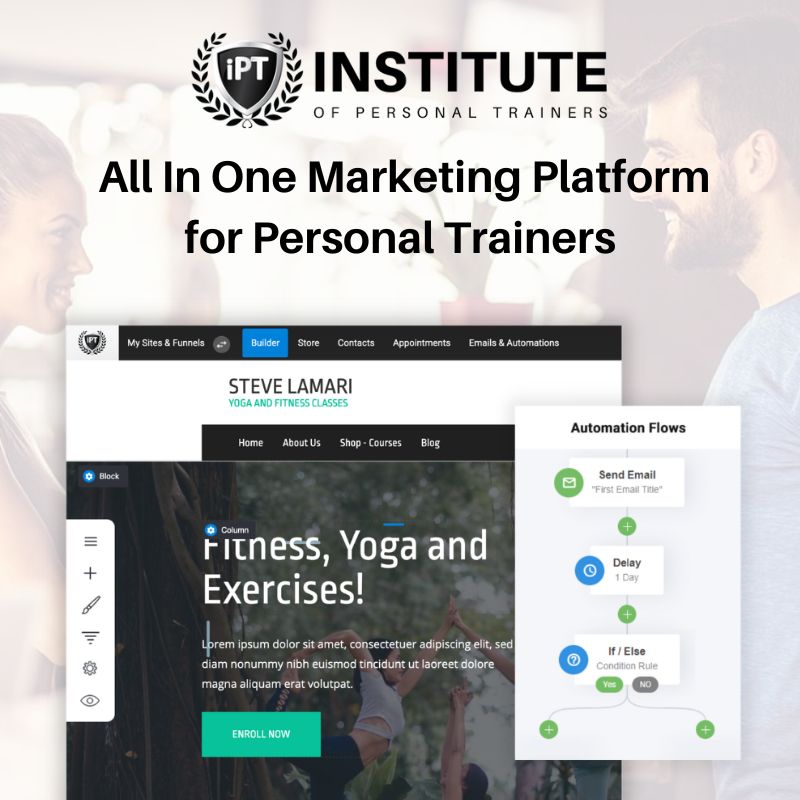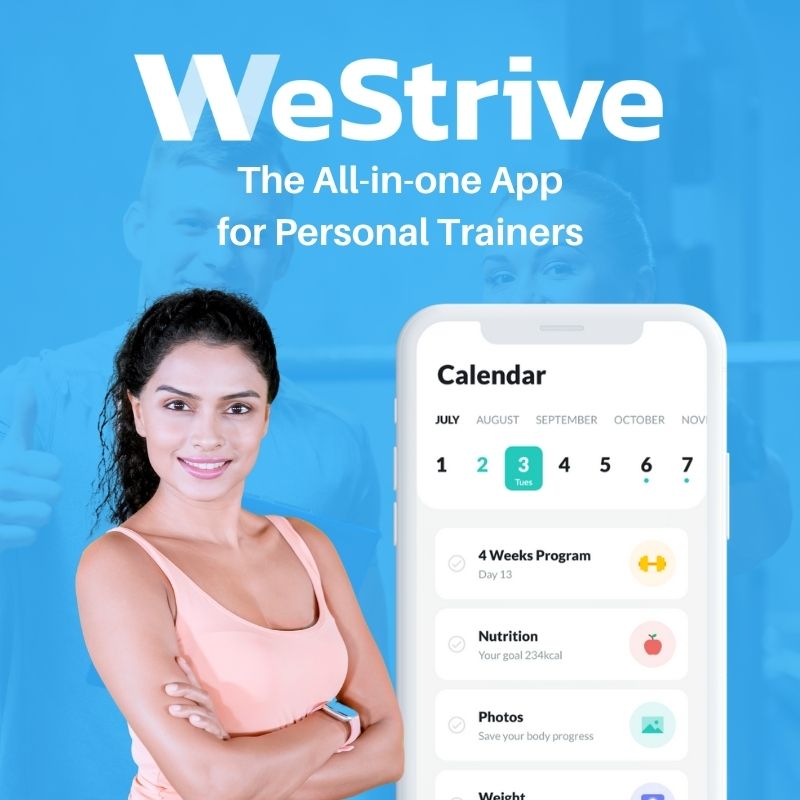Sometimes, it can seem like a modern, legitimate business is almost defined by having an online presence. A personal trainer website is part of that. But it’s not the only part, and for personal trainers that feel like they’re getting caught up on making a website before they get started working on their businesses and helping clients, it’s possibly just slowing you down.
According to a research quoted in the Entrepreneur magazine from 2016, 46% of small business owners in the US don't have a website. The most common reasons for not having one are that they don't think it's relevant to their business or industry, e.g. they don't need one, lack of continuous financial or time investment they think it needs or they're just using social media profiles instead.
However, 81% if people will carry out an online search before making a purchase which means a lot of these businesses are leaving money on the table. To help you decide whether a fitness website is for you, we've compiled a list of pro and cons.
Cons of Having a Personal Trainer Website
To be clear, you don’t need a personal trainer website to have a successful personal training business. If you’re a face to face personal trainer in a gym or studio, and the majority of your clients from in-person relationships and referrals, you may never need one at all.
Just keep in mind that people will likely Google you so a nice professional one page website could be useful.
If you’re an online personal trainer, and you have a lively and engaged social media following - that may be enough to have the impact you’re looking for as a fitness business owner. Let's see what are the cons of having a fitness website.
Just keep in mind that people will likely Google you so a nice professional one page website could be useful.
If you’re an online personal trainer, and you have a lively and engaged social media following - that may be enough to have the impact you’re looking for as a fitness business owner. Let's see what are the cons of having a fitness website.
1. It Takes Time to Develop
Creating a personal trainer website yourself takes time. Even the language and terminology used can be off-putting and unless you’re confident with technology, it can feel intimidating.
People that design websites themselves, who don’t have a good grounding in what should be included and how to make it work compatibly together, can waste a lot of time trying to build it themselves.
Even if you hire a fitness web designer to create your amazing personal trainer website, they still need your input throughout the development process to make sure it talks to your ideal clients.
People that design websites themselves, who don’t have a good grounding in what should be included and how to make it work compatibly together, can waste a lot of time trying to build it themselves.
Even if you hire a fitness web designer to create your amazing personal trainer website, they still need your input throughout the development process to make sure it talks to your ideal clients.
2. It Has Running Costs
A smaller consideration is the financial investment required. Having a personal trainer website has multiple costs. First, you need to register your domain. Most domain registrars offer the first and sometimes the second year at a discounted rate, then you pay a registration fee annually.
You will also pay for web hosting so your website can have a server space on your host's servers that is secure, regularly maintained and supported. This is a monthly cost and varies depending on where you buy your web hosting.
Next, you'll need a designer platform. This is pretty essential if you're designing yourself and you don't know how to code. A designer platform will enable you to drag and drop elements, change fonts and colours so you don't have to write the code for it.
If you need any third-party app for widgets or other elements you'd like to include, you may need to pay for those too, as well as for any stock photos unless you find adequate ones on one of the free stock photo portals.
It’s not a large expense, particularly when considered in the wider context of the other investments you would make in your business, but it may be something that a brand new personal trainer need not consider a priority if income is a little low at the moment.
You will also pay for web hosting so your website can have a server space on your host's servers that is secure, regularly maintained and supported. This is a monthly cost and varies depending on where you buy your web hosting.
Next, you'll need a designer platform. This is pretty essential if you're designing yourself and you don't know how to code. A designer platform will enable you to drag and drop elements, change fonts and colours so you don't have to write the code for it.
If you need any third-party app for widgets or other elements you'd like to include, you may need to pay for those too, as well as for any stock photos unless you find adequate ones on one of the free stock photo portals.
It’s not a large expense, particularly when considered in the wider context of the other investments you would make in your business, but it may be something that a brand new personal trainer need not consider a priority if income is a little low at the moment.
3. It Requires Continuous Time Investment
To maintain a personal trainer website properly takes time. Setting aside time every week to create content for the fitness articles may be time you need to spend on other priorities right now.
In order to properly rank on Google, not only does your website need to be optimised, but it needs to be regularly maintained and updated too. Sometimes, having a business with an online presence can feel like a relentless treadmill of content creation - particularly, alongside all your social media channels.
Having to regularly create new, relevant content that your ideal client finds not only useful and engaging but also wants to share with others, can feel like a challenge and take time away from tasks you enjoy and you're good at.
In order to properly rank on Google, not only does your website need to be optimised, but it needs to be regularly maintained and updated too. Sometimes, having a business with an online presence can feel like a relentless treadmill of content creation - particularly, alongside all your social media channels.
Having to regularly create new, relevant content that your ideal client finds not only useful and engaging but also wants to share with others, can feel like a challenge and take time away from tasks you enjoy and you're good at.
Overview of Cons
Before you make a decision on whether or not start a website project, you'll need to consider its financial and time investment and ensure that you understand what it takes. A website can be a powerful asset for your personal training business, but only if it can work for you. If you don't have the resources to create and nourish that marketing channel, it will just take money from the business without working for it.
Pros Of Having A Personal Trainer Website
Following on from the cons section, once you're positive that you are ready to invest your time and some money, there's a host of benefits of having a fitness website. Let's take a look!
1. 24/7/365 Online Business Card
Having a personal trainer website is a presence that’s online 365 days a year, even when you are not. When your prospective client Googles your name or your services, they are currently thinking that you may have the solution to their problems.
It provides them with a solution at the point when they are driven to look for one. In that sense, it’s like a safety net both for the trainer and the prospect. It means you don’t miss out on any leads, and it means that the prospect is reassured no matter when they are driven to seek help.
It provides them with a solution at the point when they are driven to look for one. In that sense, it’s like a safety net both for the trainer and the prospect. It means you don’t miss out on any leads, and it means that the prospect is reassured no matter when they are driven to seek help.
2. A Personal Trainer Website Builds Trust
Having a professional website goes some way to legitimise a personal training business in the eyes of some prospects. In the online training market, this legitimacy is especially important. Having a permanent home on the internet is going to create a sense of trust in your business and coaching solutions.
Your prospect isn’t simply transferring money to some stranger on the internet now, they’re buying established services from a legitimate professional with a website where they can display their social proof. Not only does this make you more likely to make that first sale, but it gives the new client somewhere to send their friends and bring you referrals.
Your prospect isn’t simply transferring money to some stranger on the internet now, they’re buying established services from a legitimate professional with a website where they can display their social proof. Not only does this make you more likely to make that first sale, but it gives the new client somewhere to send their friends and bring you referrals.
3. Big Long-Term ROI for a Small Investment
Once you’ve set your website up properly, the only pages that get regularly updated and require on-going effort is the blog page. This is where you’ll be posting articles which are interesting, relevant and sharable to your target audience.
Not only does this give you a place you can send someone to check out a bank of resources about something they’ve asked you about - which provides them with some useful information and saves you from answering the same questions all the time. It also gives you a place where you can pre-qualify these visitors as leads.
That means that by using effective copy on your website, you get fewer enquiries from people that don’t understand if your services are right for them, that don’t know if they can afford your monthly fee or your minimum time commitment, and so it helps to improve the number of sales calls you do with people that already understand your coaching package and have convinced themselves that yours is the right solution for them. It reduces the number of clients that don’t show up for the call, or who choose not to buy on that call.
Consistently delivering useful content in the form of blogs will increase your SEO ranking organically over time. It's a long-term strategy and might take months or even years, but then you'll have a continuous flow of incoming leads with almost no effort. Pretty amazing, right?
Not only does this give you a place you can send someone to check out a bank of resources about something they’ve asked you about - which provides them with some useful information and saves you from answering the same questions all the time. It also gives you a place where you can pre-qualify these visitors as leads.
That means that by using effective copy on your website, you get fewer enquiries from people that don’t understand if your services are right for them, that don’t know if they can afford your monthly fee or your minimum time commitment, and so it helps to improve the number of sales calls you do with people that already understand your coaching package and have convinced themselves that yours is the right solution for them. It reduces the number of clients that don’t show up for the call, or who choose not to buy on that call.
Consistently delivering useful content in the form of blogs will increase your SEO ranking organically over time. It's a long-term strategy and might take months or even years, but then you'll have a continuous flow of incoming leads with almost no effort. Pretty amazing, right?
4. You're in Control
A problem with only having a social media account is that if they change the algorithm, alter the terms of advertising on the site, or make the platform “pay to play” only, you might lose your entire audience overnight. If you’re running your business from someone else’s business, it’s vulnerable to the rules of that company.
When you have your own website, you’re in control of it. You’re able to publish content that will help people, and use the site to include email marketing into your strategy to stay in touch with your audience and build your relationship privately. Those email addresses are yours and maintaining that relationship isn’t subject to the whims of social media. Everyone has an email address, and it’s one of the most simple ways to market your personal training services as everyone already understands how emails work.
When you have your own website, you’re in control of it. You’re able to publish content that will help people, and use the site to include email marketing into your strategy to stay in touch with your audience and build your relationship privately. Those email addresses are yours and maintaining that relationship isn’t subject to the whims of social media. Everyone has an email address, and it’s one of the most simple ways to market your personal training services as everyone already understands how emails work.
5. Your Platform, Your Mission, Your Values
Possibly the most important reason for having a personal trainer website is that it’s a place where you can authentically communicate your values. As a personal trainer, a big part of what you’re asking clients to “buy into” is the willingness to invest in themselves and their own development.
Having a professional, well-maintained website is a way to present your investment in your own fitness business. It is a living embodiment of practising what you preach. Showing your clients that you’re willing to invest in yourself will allow them to mirror those values and can help to give themselves permission to make that similar financial and time commitment towards their own values - health, longevity, fitness.
Having a professional, well-maintained website is a way to present your investment in your own fitness business. It is a living embodiment of practising what you preach. Showing your clients that you’re willing to invest in yourself will allow them to mirror those values and can help to give themselves permission to make that similar financial and time commitment towards their own values - health, longevity, fitness.
Overview of Pros
Once you overcome the hurdle of having to put energy into creating and nurturing your personal trainer website, it will become the most powerful asset in your business as we fast-track into the future with online services flourishing. So if you're in it for the long game, eventually a fitness website will become a must-have.
If creating your own feels like too much of a challenge for you, create a "my fitness website fund" and add some money to it at every time you get paid by a client, even f it's just $5 or $1. Eventually you'll have enough to consider hiring a professional website design service that will take care of the brick and mortar part of it for you.
If creating your own feels like too much of a challenge for you, create a "my fitness website fund" and add some money to it at every time you get paid by a client, even f it's just $5 or $1. Eventually you'll have enough to consider hiring a professional website design service that will take care of the brick and mortar part of it for you.









